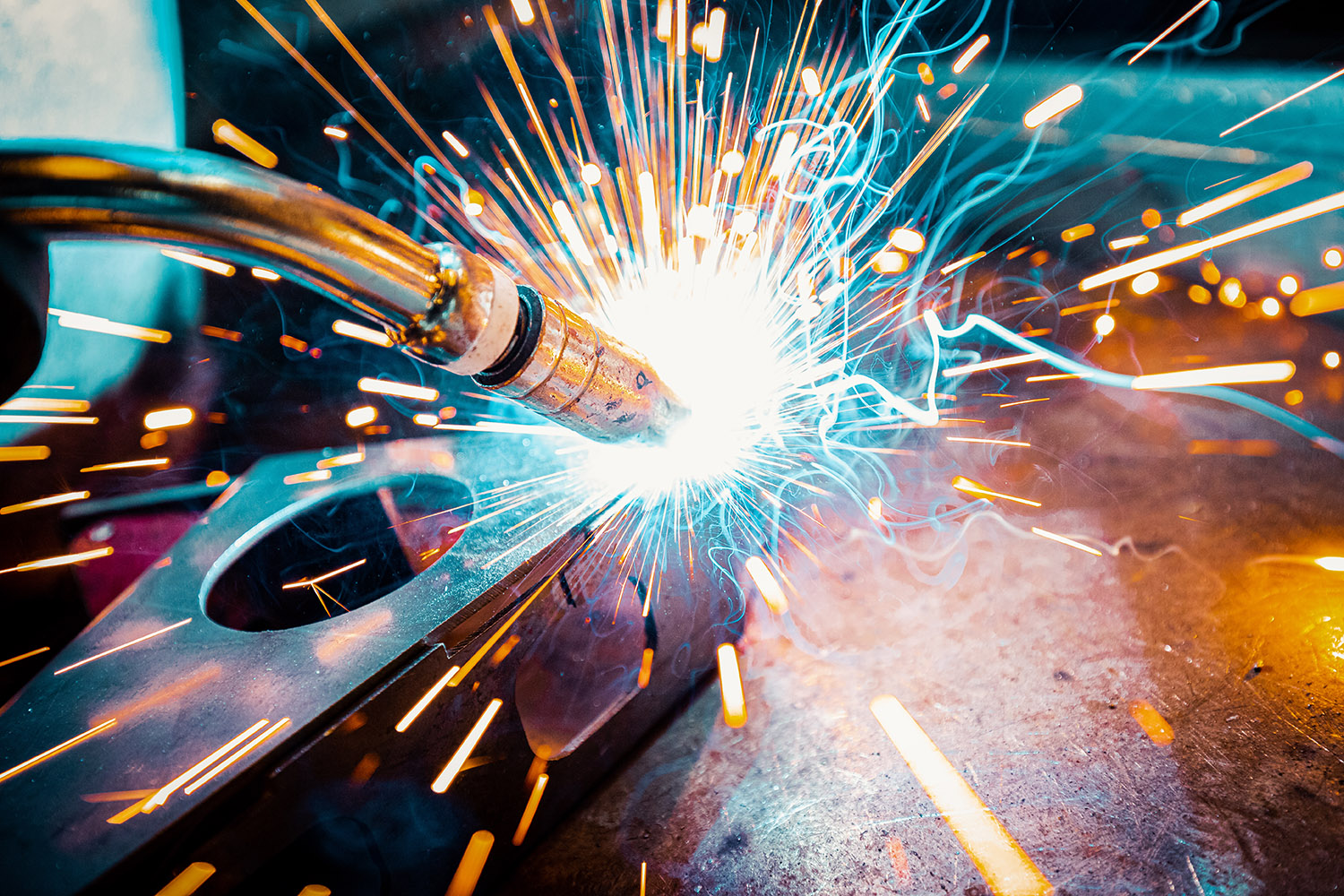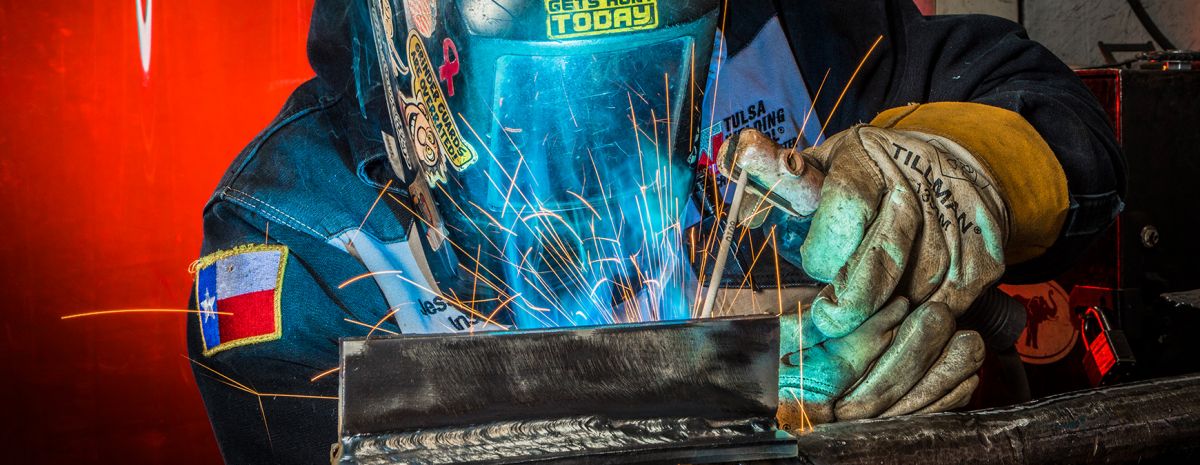Why welds crack and how Montana Mobile Welding and Repair prevents them
Wiki Article
Usual Welding Repair Work Issues and How to Address Them Effectively
Welding repair work usually run into a variety of concerns that can threaten the integrity of the final product. Common problems consist of poor infiltration, porosity, and imbalance, to name a few. Each flaw provides special obstacles that require specific methods for resolution. Comprehending these concerns is necessary for welders intending to improve their results and skills. This conversation will explore these typical welding fixing problems and efficient approaches to address them.Insufficient Penetration
Inadequate infiltration happens when the weld steel fails to fully fuse with the base material, causing weak joints and prospective architectural failings. This problem often comes from not enough warmth input, incorrect electrode angle, or incorrect welding rate. Welders may experience poor penetration as a result of a mistake of the necessary parameters for a particular material density or type. Furthermore, contamination on the base product's surface can prevent efficient bonding, worsening the trouble. To attend to insufficient infiltration, welders need to guarantee ideal setups on their devices and keep a clean work surface area. Routine evaluation of welds is recommended to determine any type of shortages early, enabling prompt corrections and the avoidance of compromised architectural honesty in bonded settings up.Porosity
Porosity is an usual defect in welded joints that shows up as little gas bubbles trapped within the weld metal. This flaw can endanger the stability of the weld, causing reduced strength and prospective failing under anxiety. Belgrade. Porosity typically develops from contamination, moisture, or incorrect welding strategies, which allow gases to get away right into the molten weld swimming pool. To deal with porosity, welders need to assure proper surface area preparation, keep a tidy functioning setting, and utilize appropriate welding criteria. Furthermore, picking the appropriate filler material and protecting gas can mitigate gas entrapment. Routine evaluation and screening of welds can aid identify porosity early, ensuring prompt rehabilitative activities are taken, thereby preserving the high quality and reliability of the welded structureMisalignment
Misalignment in welding can develop from numerous variables, including improper arrangement and thermal growth. Understanding the root triggers is necessary for effective resolution. Numerous modification techniques are readily available to realign elements and guarantee structural integrity.Reasons for Misalignment
Welding imbalance typically stems from a range of underlying concerns that can endanger architectural integrity. One key reason is inappropriate fit-up of components before welding, which can result in voids and uneven surface areas. Variants in thermal growth throughout the welding procedure can additionally cause distortion, particularly if the products being joined have various coefficients of expansion. Furthermore, inadequate securing and fixturing might fall short to hold parts securely in position, bring about activity throughout welding. Poorly maintained equipment, including welding makers and devices, may present disparities in the weld bead, further adding to imbalance. Lastly, operator mistake, originating from inadequate training or experience, can likewise play a substantial role in developing misaligned welds.Adjustment Techniques Available
Attending to imbalance successfully needs a mix of corrective techniques customized to the details problems handy. One common approach is the use of jigs or fixtures to hold parts in the right placement throughout welding, making sure constant placement. Furthermore, preheating the materials can aid lower distortion and enhance fit-up. For considerable imbalance, mechanical realignment techniques, such as making use of hydraulic jacks or clamps, can be employed to deal with the setting before welding. Post-weld warmth therapy may additionally be required to eliminate tensions triggered by misalignment. Careful evaluation and change during the setup stage can avoid imbalance problems from coming to be substantial issues, advertising a smoother welding procedure and enhancing overall architectural honesty.Distortion
Distortion is a common challenge in welding that can emerge from numerous aspects, consisting of uneven heating & cooling. Comprehending the root causes of distortion is necessary for implementing efficient avoidance techniques. Addressing this concern not only boosts architectural stability but likewise enhances the overall top quality of the weld.Sources of Distortion
When subjected to the intense warm of welding, materials typically go through adjustments that can bring about distortion. This phenomenon mostly occurs from thermal expansion and contraction throughout the welding procedure. As the weld area warms up, the product broadens; upon air conditioning, it contracts, which can create internal stresses. In enhancement, uneven heating throughout a workpiece can intensify these stresses, resulting in bending or flexing. The kind of product additionally plays a considerable function; metals with varying thermal conductivity and coefficients of development may react differently, causing uncertain distortions. Poor joint layout and poor fixturing can add to imbalance throughout welding, boosting the chance of distortion. Understanding these causes is vital for effective welding repair service and avoidance approaches.Prevention Techniques
Reliable avoidance techniques for distortion during welding concentrate on controlling heat input and making certain correct joint style. Maintaining a regular warmth input aids to decrease thermal expansion and tightening, which can cause distortion. Making use of methods such as preheating the work surface can also reduce the temperature level gradient, promoting uniform heating. In addition, selecting ideal joint styles, such as T-joints or lap joints, can improve security and lower stress focus. Executing appropriate fixturing to protect the work surfaces in position even more help in preserving positioning during the welding process. Lastly, staggered welding series can disperse warm more uniformly, stopping localized distortion. By applying these strategies, welders can considerably lower the chance of distortion and boost the total top quality of their welds.Cracking
Breaking is a typical issue run into in welding repair work, commonly arising from different variables such as incorrect air conditioning prices, product selection, or inadequate joint prep work. The occurrence of cracks can significantly jeopardize the integrity of the weld, bring about prospective failures throughout procedure. To resolve this problem, welders need to first analyze the origin, guaranteeing that products work and suitably chosen for the certain application. In addition, controlling the cooling rate during the welding process is important; quick air conditioning can induce tension and cause splitting. Appropriate joint style and prep work also contribute to decreasing the danger. Executing these methods can boost weld quality and sturdiness, eventually decreasing the possibility of splitting in finished weldments.
Insufficient Fusion
A significant concern in welding repair work is incomplete blend, which happens when the weld metal does not sufficiently good welds bond with the base product or previous weld passes - Montana Mobile Welding and Repair Fabrication. This issue can bring about weaknesses in the joint, possibly compromising the honesty of the welded structure. Elements adding to insufficient combination consist of insufficient warm input, improper welding strategy, and contamination of the surfaces being joined. To resolve this problem successfully, welders ought to ensure correct pre-weld cleaning and surface preparation, in addition to adjust their welding parameters to attain sufficient infiltration and fusion. Normal inspection throughout the welding process can additionally assist identify insufficient fusion early, permitting for timely corrective actions to improve the general top quality of the weldOverheating
While welding fixings can enhance architectural integrity, overheating read this provides a substantial challenge that can lead to product deterioration. Extreme warm throughout welding can change the mechanical buildings of steels, resulting in decreased stamina, enhanced brittleness, and warping. This phenomenon is particularly critical in high-stress applications where structural integrity is vital. Recognizing overheating can include aesthetic inspections for staining or distortion, in addition to monitoring temperature level throughout the welding procedure. To alleviate the threats associated with overheating, welders need to utilize proper methods, such as controlling heat input, readjusting traveling speed, and utilizing appropriate filler products. Furthermore, carrying out pre- and post-weld warm therapies can aid bring back material residential or commercial properties and improve the general high quality of the repair service, ensuring long-term efficiency and security.Regularly Asked Questions
What Are the Usual Indicators of a Welding Problem?

Exactly How Can I Examine My Welds for Quality?
To check welds for quality, one can utilize aesthetic examinations, ultrasonic screening, and radiographic approaches. Each strategy guarantees structural stability, determines issues, and verifies adherence to specified requirements, ultimately improving you could look here the dependability of the welded joints.What Security Precautions Should I Take While Welding?
When welding, one should focus on safety and security by putting on appropriate individual safety equipment, making sure proper air flow, securing flammable materials away, maintaining a clean office, and knowing environments to prevent mishaps and injuries.Can I Fix a Weld Without Remodeling the Entire Joint?
Fixing a weld without renovating the whole joint is possible, depending upon the damage (Montana Mobile Welding and Repair). Techniques such as grinding, including filler material, or using a welding process can effectively attend to details defects while maintaining the surrounding frameworkWhat Devices Are Important for Effective Welding Repair Works?
Important tools for efficient welding repair services consist of a welding machine, wire brush, mill, safety gear, clamps, and filler materials. Each tool plays a crucial role in making sure high quality and safety and security during the repair work process. Porosity usually occurs from contamination, moisture, or improper welding strategies, which allow gases to escape into the liquified weld pool. Badly maintained equipment, including welding machines and tools, might introduce inconsistencies in the weld grain, more adding to imbalance. When subjected to the intense warmth of welding, materials usually go through changes that can lead to distortion. Fracturing is a common problem run into in welding repair services, frequently resulting from numerous aspects such as inappropriate air conditioning rates, material selection, or insufficient joint prep work. A significant issue in welding fixings is insufficient fusion, which takes place when the weld metal does not properly bond with the base product or previous weld passes.Report this wiki page